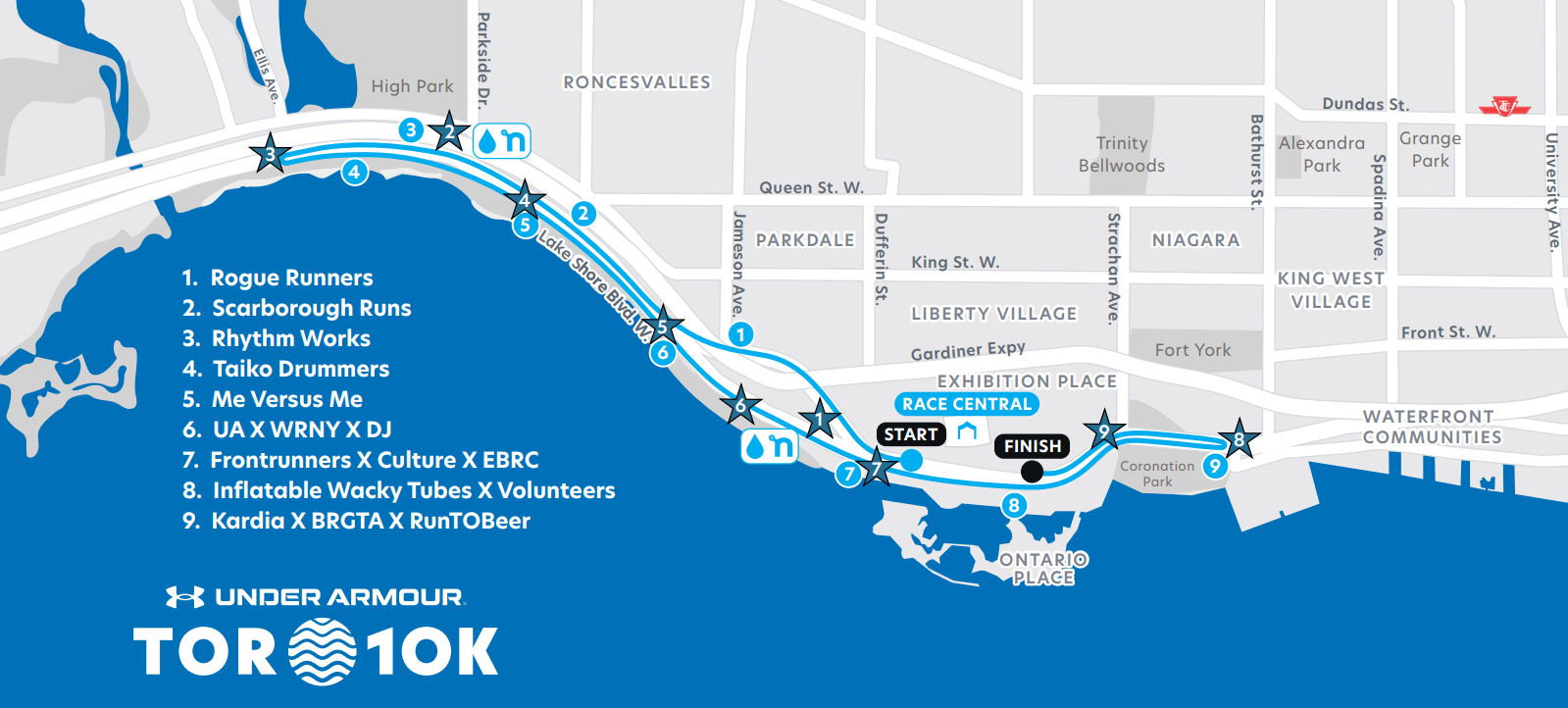Wind, Grit, and Smart Racing at Canada’s Fastest 10K
The Toronto 10K race, part of the Canada Running Series, is often seen as the place where fast times happen early in the season. With its flat roads, closed course, and scenic downtown location, it’s a favorite for elites and age-groupers alike.
However in 2025, wind off Lake Ontario turned a usually quick course into a strategic, energy-managing test of patience. This year’s race become the ultimate lesson in smart racing.

Wind Wins (and Loses) Races
Runners lined up for the Toronto 10K expecting fast splits. What they got instead was a stiff east wind, with sustained gusts hitting 30 km/h making kilometers 3 to 8 a grind. That stretch, typically the fastest part of the course, became a place where the race could be lost if runners didn’t adjust. For those that have run the Toronto Waterfront Marathon, it’s roughly the same stretch as km 8-17!
As a coach to six athletes on the day, including both the men’s winner and third overall female, I knew the race would come down to who managed the wind the best. We changed plans mid-week to emphasize position over pace. During the race, I rode alongside the course to check in with athletes live, reminding them to stay composed until the final tailwind stretch.
Thomas Nobbs: Racing Smart, Surging Late
TRR Coach Thomas Nobbs had already proven his fitness by running over 30 seconds faster just two weeks prior in Ottawa. We came into the Toronto 10K knowing it wouldn’t be about chasing a PR. Rather, we focused on pack running, conserving energy into the wind, and waiting for the 8K turnaround.
From the bike path, I could see he was executing exactly as we’d planned staying tucked in the front group, relaxed but alert. At the final turn, with the wind finally at his back, he struck hard and surged clear to win in 29:35. No fireworks early. Instead, just patience, awareness, and a killer move at the right time.
Teagan Robertson: Making the Hill Count
TRR Coach Teagan Robertson also came in sharp and ready, but like everyone else, had to reframe her goals once the wind became a factor. She started in 5th place, staying calm through the early chaos. Then, when opportunity struck, Teagan used the hill at 5.5K as a launchpad, not a fear zone.
She did just that attacking uphill and into the headwind, consequently breaking away from two rivals who had been running stride for stride. From there, she ran alone in 3rd for the final few kilometers, holding strong and finishing in 34:50. It was a bold mid-race move, backed by confidence in her training and trust in the plan.
Toronto 10K Course Breakdown + Tips
Whether you’re racing this in 2026 or just scoping out top-tier Canadian 10Ks, here’s a look at the course:
Location & Start Area
- Start/Finish: Just west of downtown Toronto, near Ontario Place / CNE Grounds
- Travel Tip: Stay local because driving to the start is a mess with road closures. Hotels like Hotel X let you warm up on foot via the lakeshore path.
Course Layout
- Out-and-back along Lake Shore Blvd W
- Entirely flat, with just one short hill at ~5.5K
- Final 2K after the turnaround is often tailwind-supported

Race Day Wind Considerations
- A west wind = ideal (tailwind on the way out).
- An east wind, like this year’s, means a slog in the middle. Adjust your pacing plan accordingly.
A Coach’s Perspective on the Toronto 10K
One of the best parts of the Toronto 10K, especially from a coach’s point of view, is how accessible the route is. The Martin Goodman Trail runs parallel to the course, which meant I could ride alongside on my bike, offering encouragement, tactical reminders, and quick adjustments on the fly. It’s rare to have this kind of access during a 10K road race, and it made a difference in helping my athletes stay focused when the wind kicked in.
Final Takeaways
The 2025 Toronto 10K was a reminder that road racing isn’t just about being fit — it’s about racing smart. The most successful athletes weren’t necessarily the fittest on paper. They were the ones who managed their effort, read the wind, and made decisions at the right time.
For anyone eyeing this event in the future:
- Expect a fast course
- Prepare for the wind
- And remember, smart racing beats perfect conditions every time

Brant Stachel is a coach with Team RunRun based in Kingston, Canada. He works with runners and triathletes of all skill levels, from beginners to international and professional athletes.

















